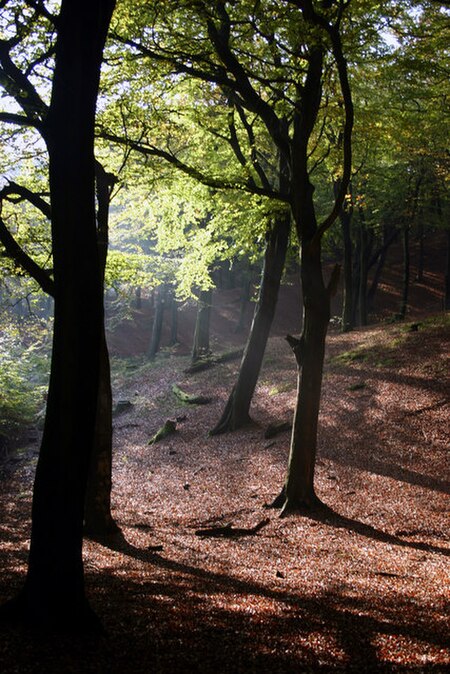Tandle Hill
Country parks in Greater ManchesterMountains and hills of Greater ManchesterMountains and hills of the PenninesParks and commons in the Metropolitan Borough of OldhamUse British English from November 2013

Tandle Hill Country Park is a country park in Royton, Greater Manchester, England. It consists of approximately 110 acres (45 ha), a combination of beech woodland and open grassland. The park contains a countryside centre (opened in 1994), picnic areas, children's play area and numerous trails and paths into the surrounding area. Two countryside rangers are based at the countryside centre. In fine weather conditions, it offers views of Manchester and the Welsh mountains.
Excerpt from the Wikipedia article Tandle Hill (License: CC BY-SA 3.0, Authors, Images).Tandle Hill
Tandle Hill Road,
Geographical coordinates (GPS) Address Nearby Places Show on map
Geographical coordinates (GPS)
| Latitude | Longitude |
|---|---|
| N 53.574 ° | E -2.144 ° |
Address
Tandle Hill Road
OL2 5UX , Oozewood
England, United Kingdom
Open on Google Maps







